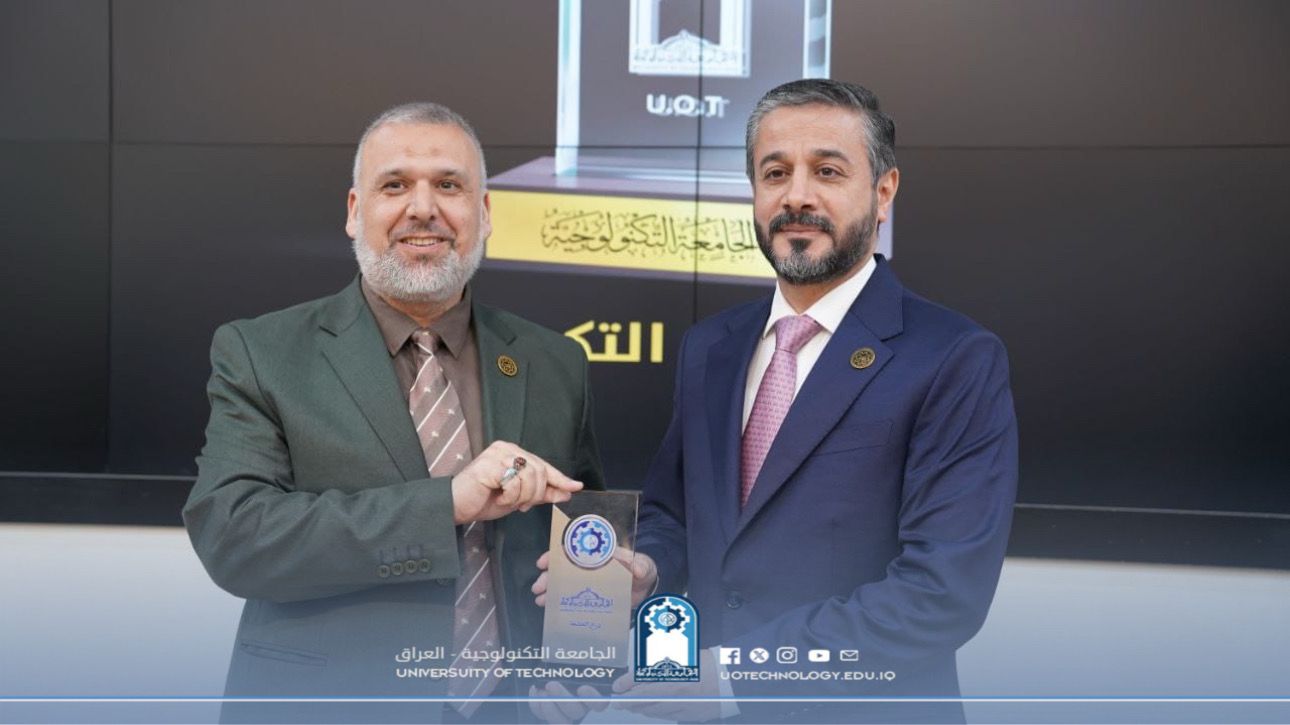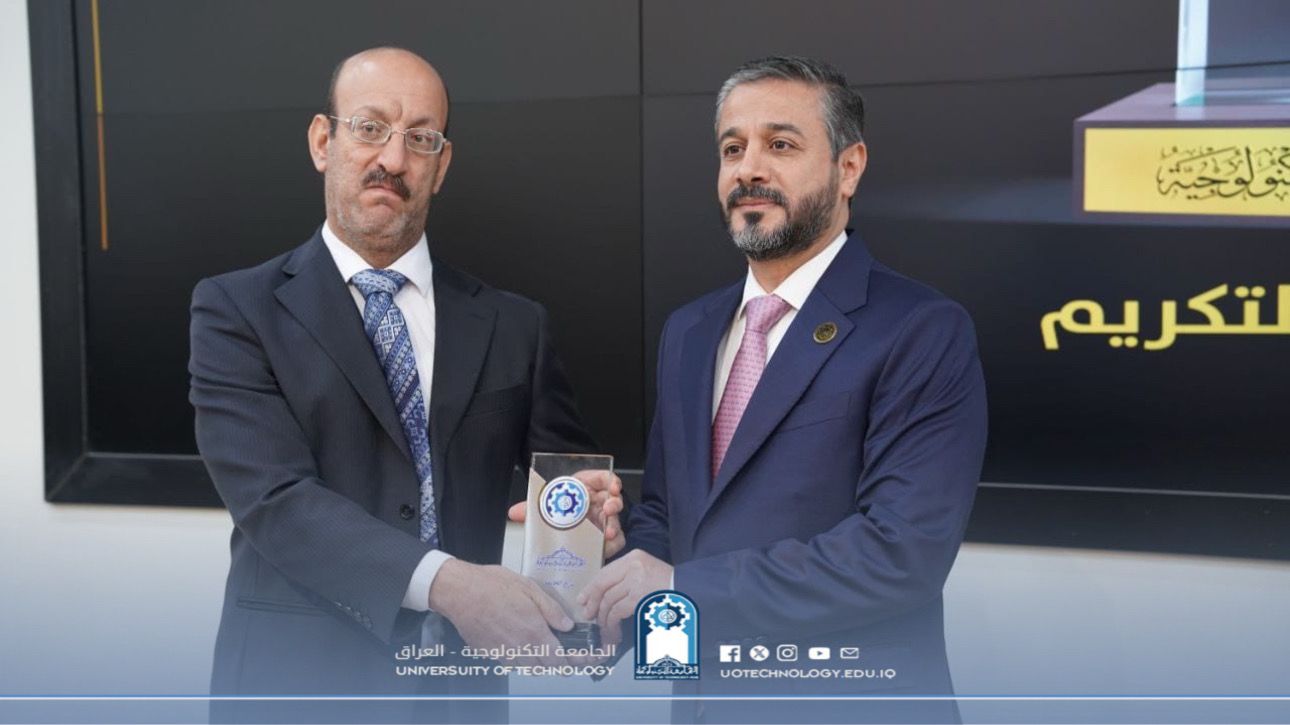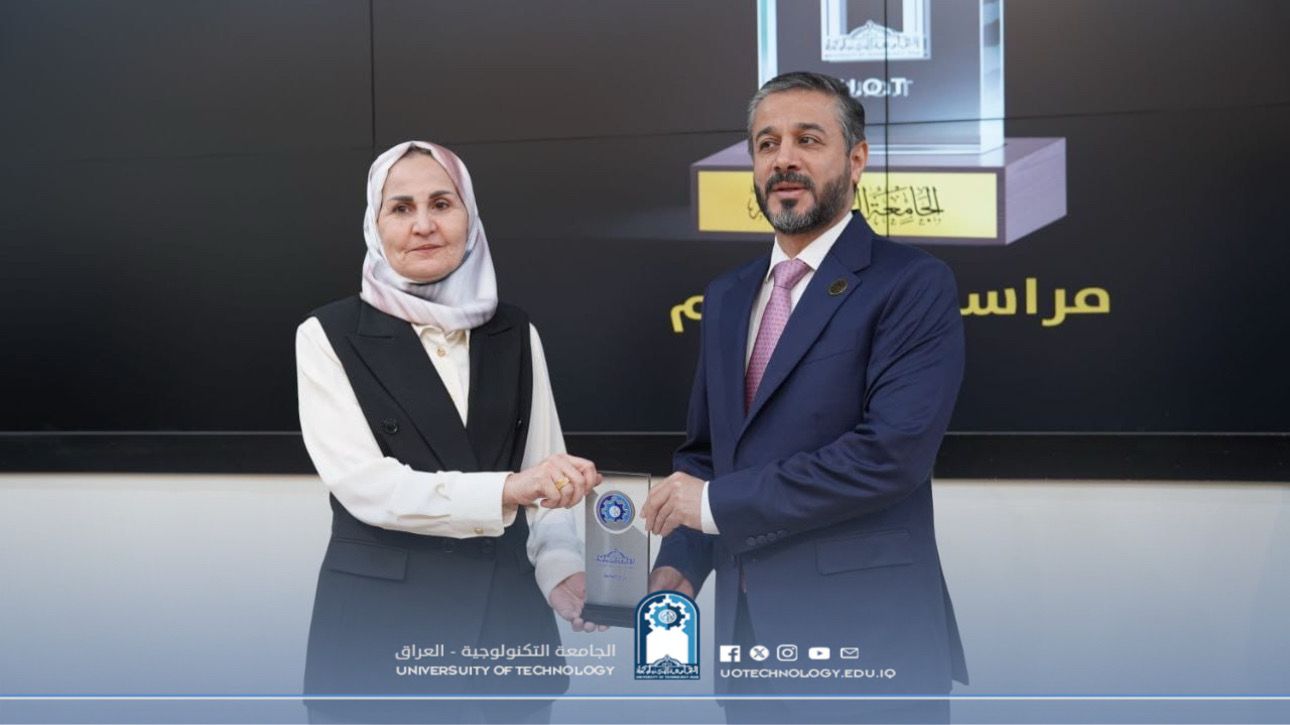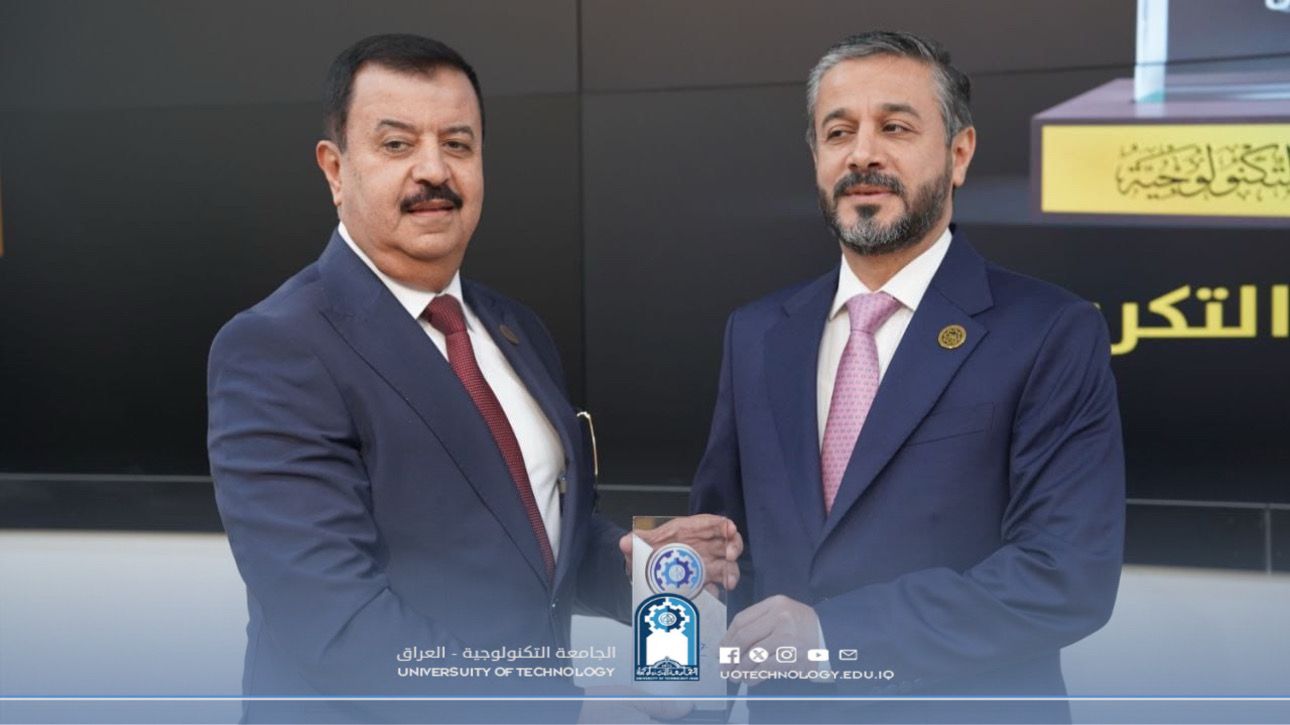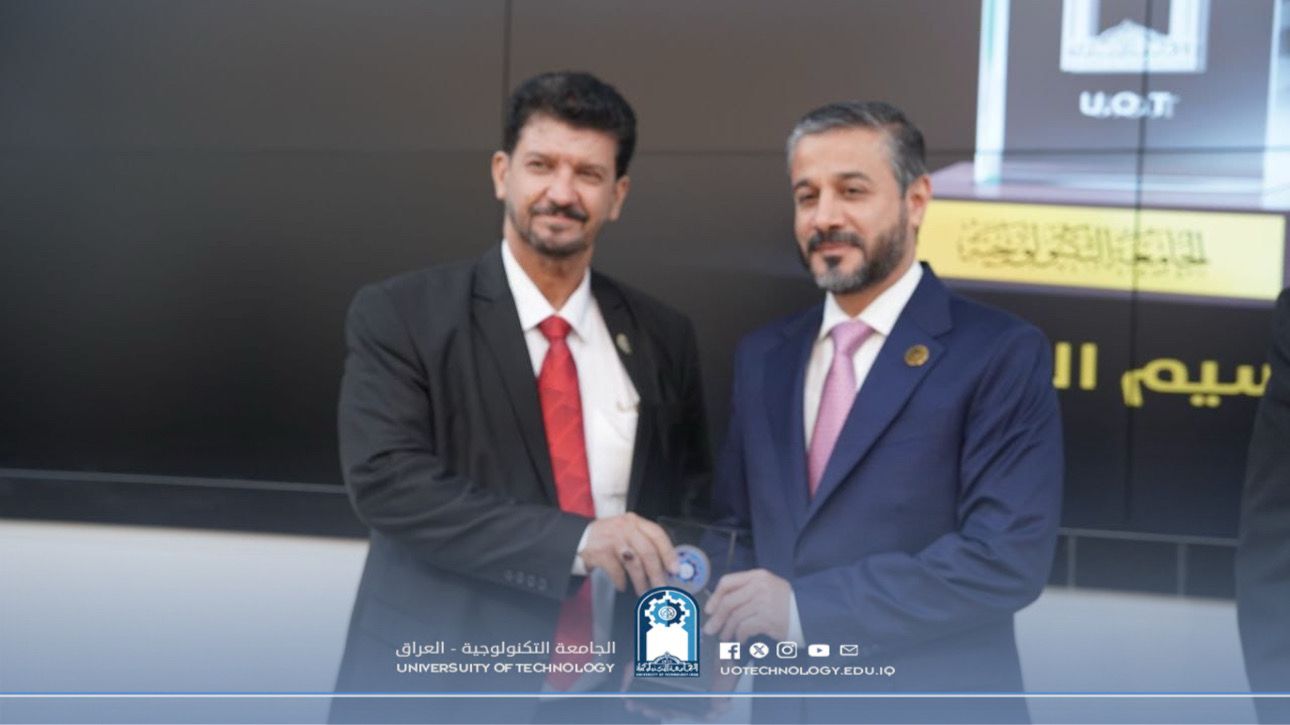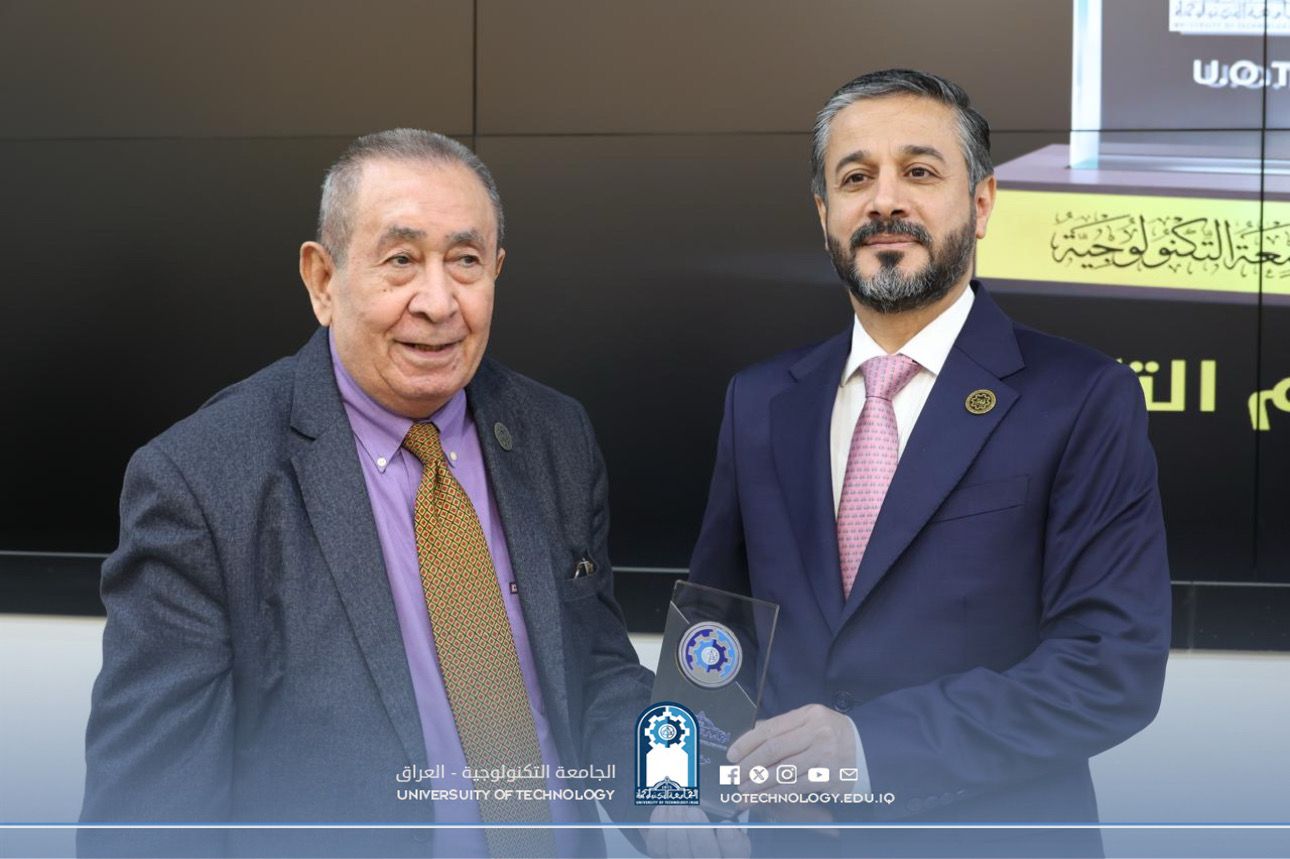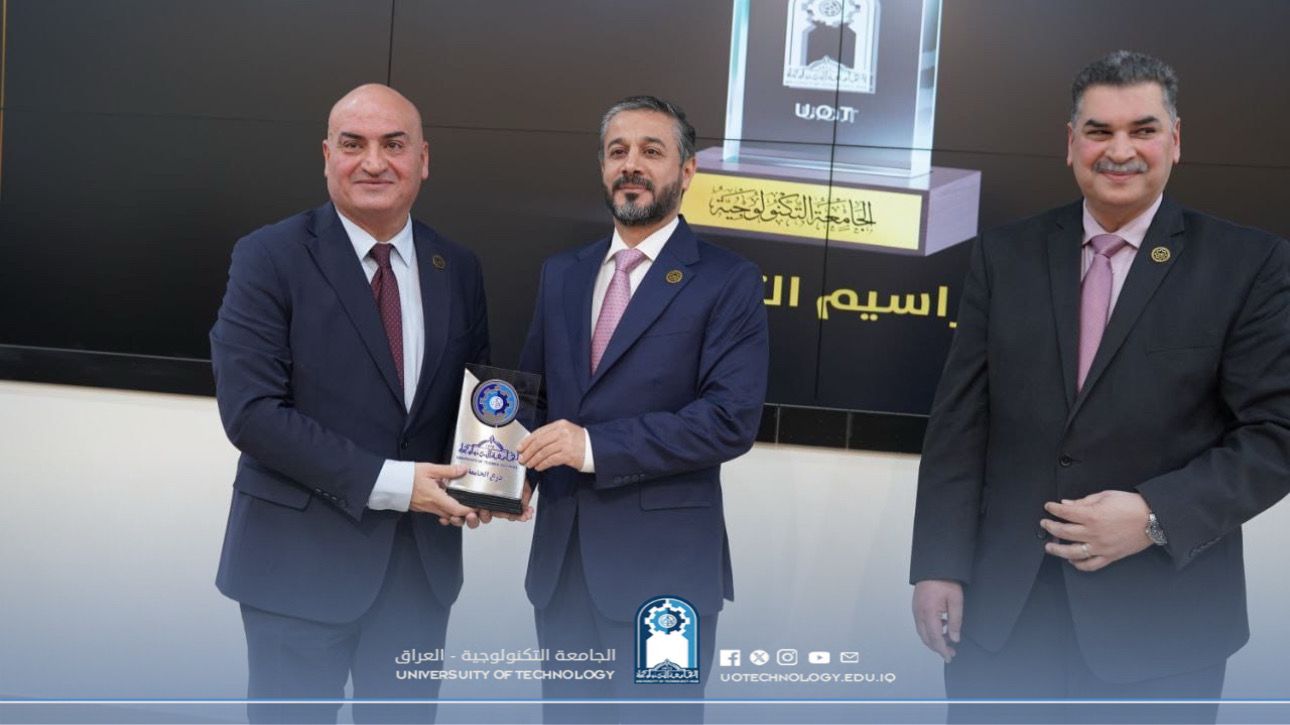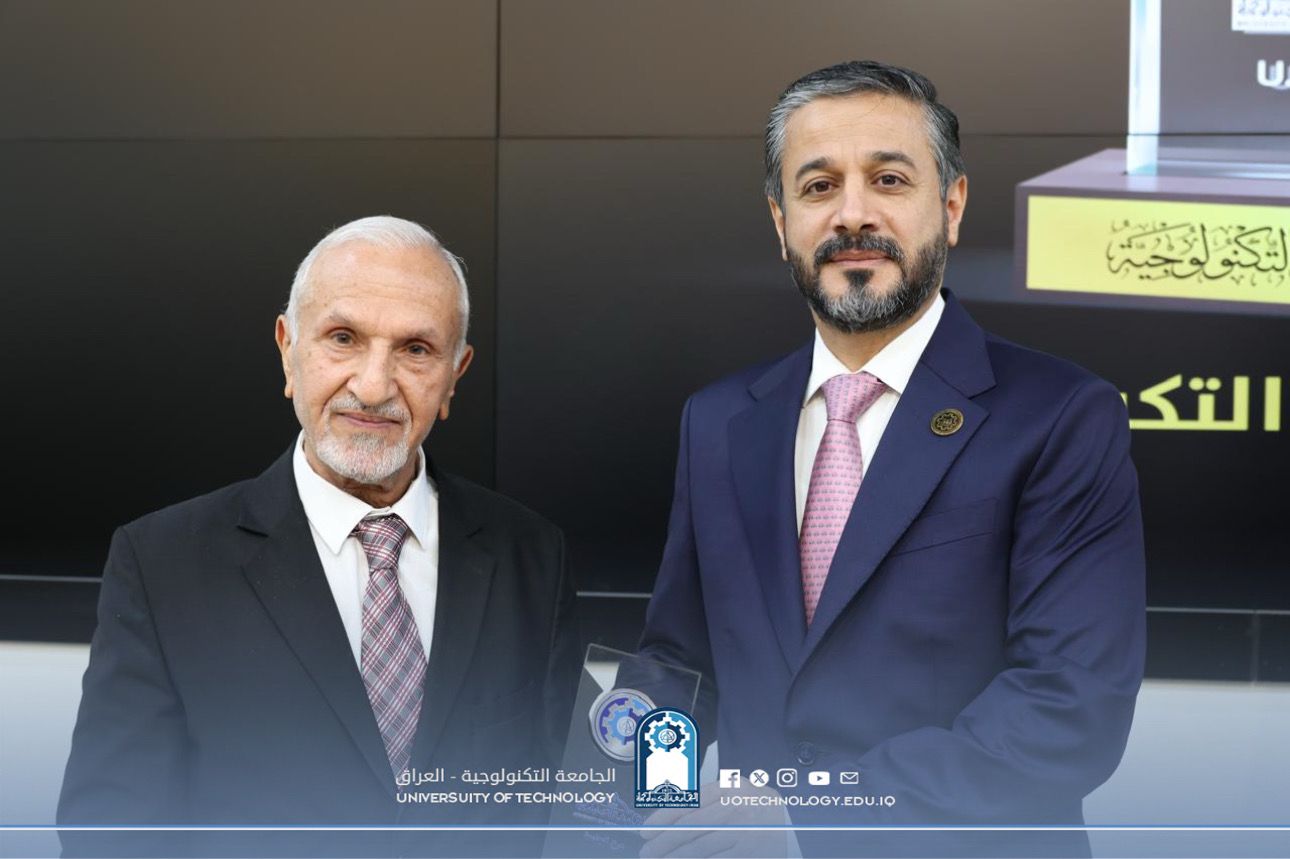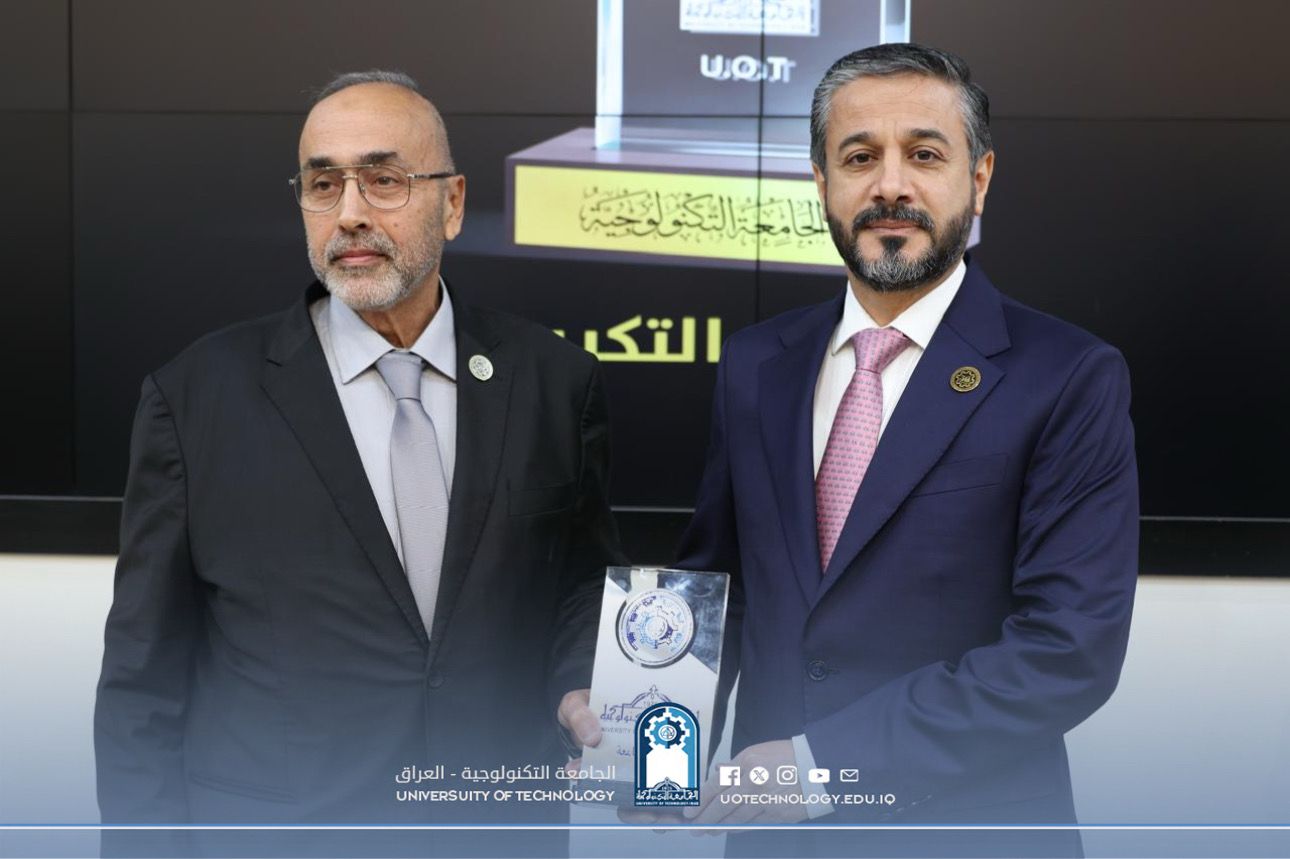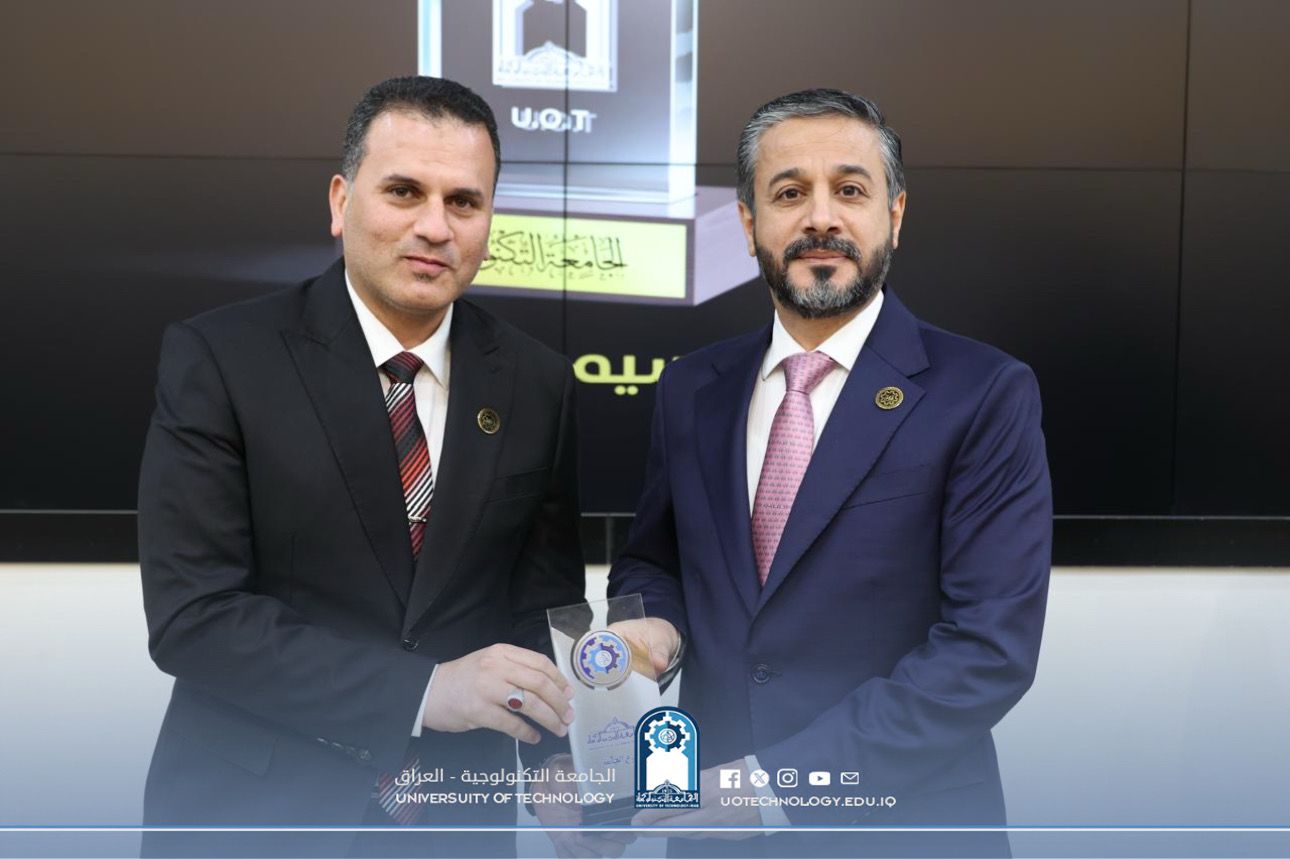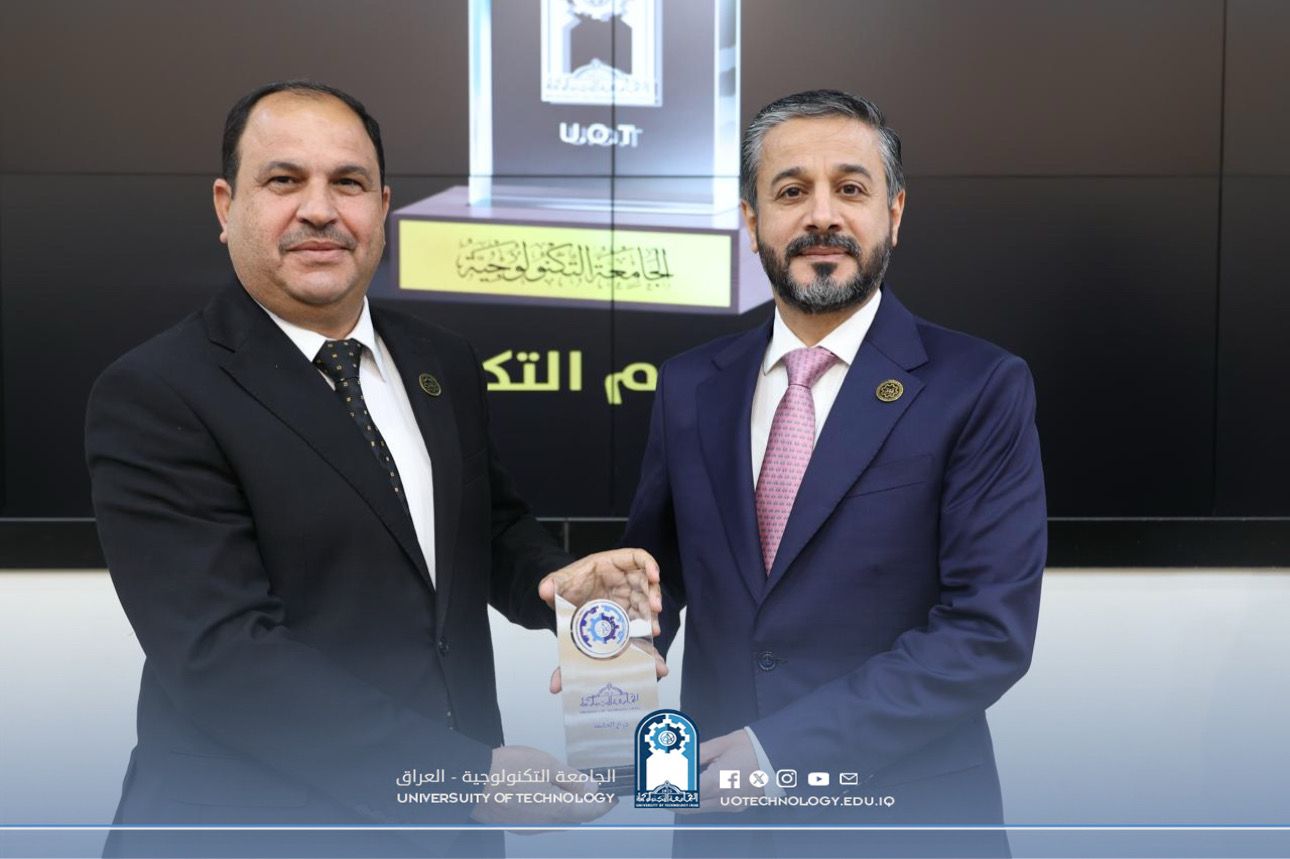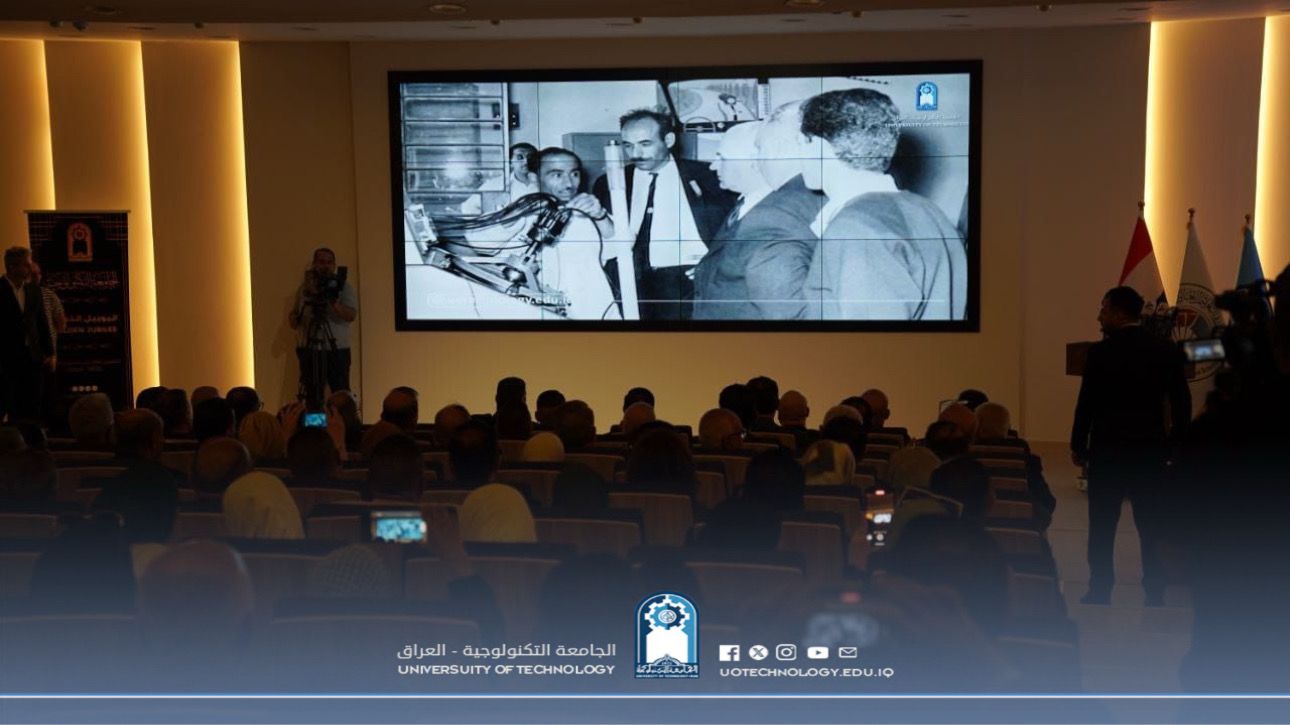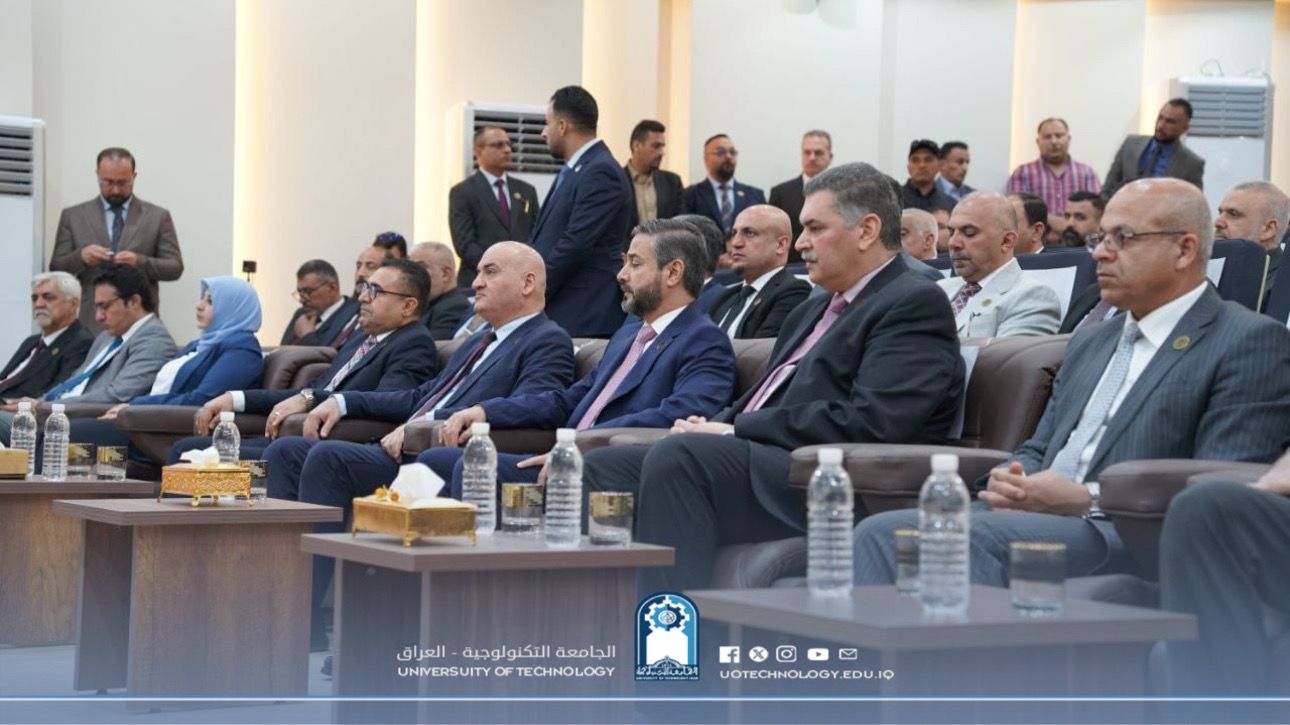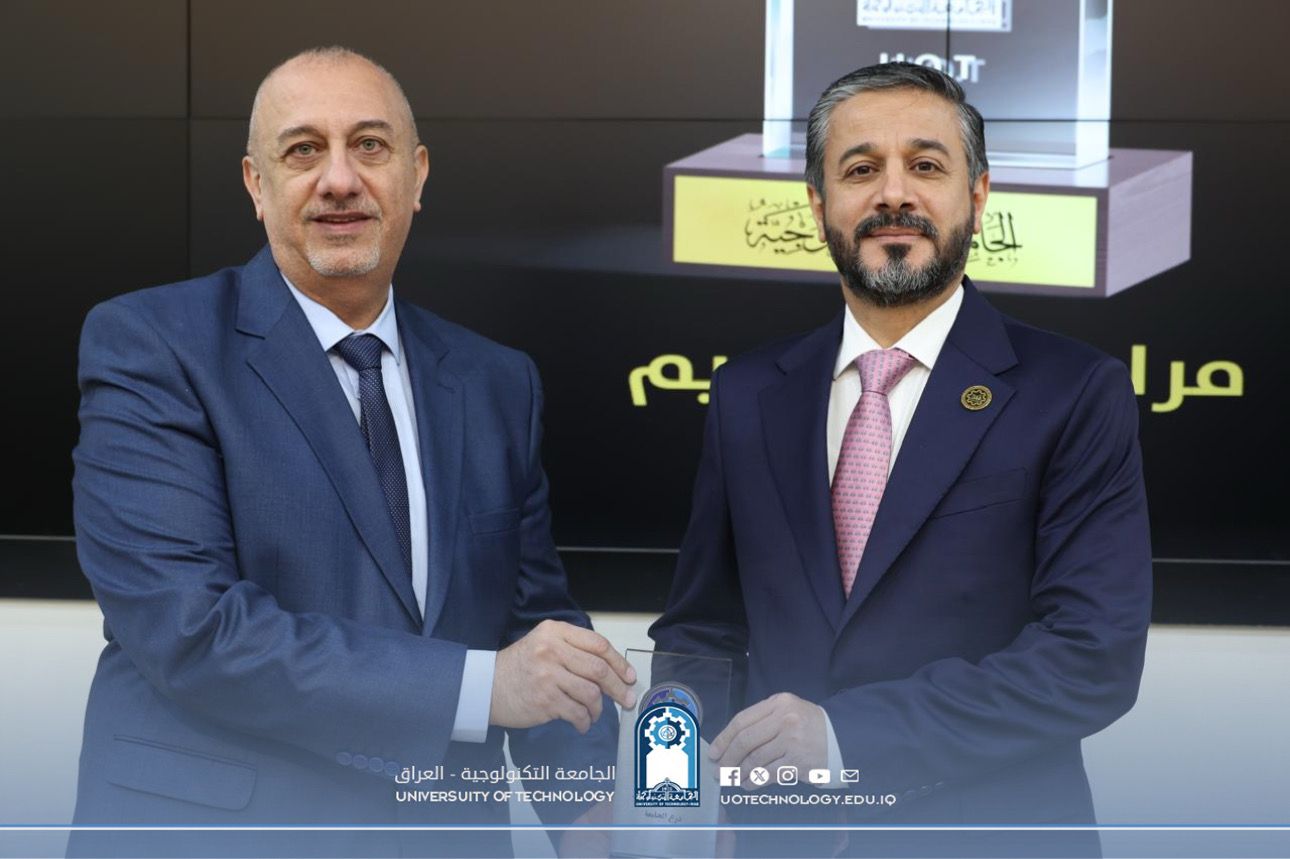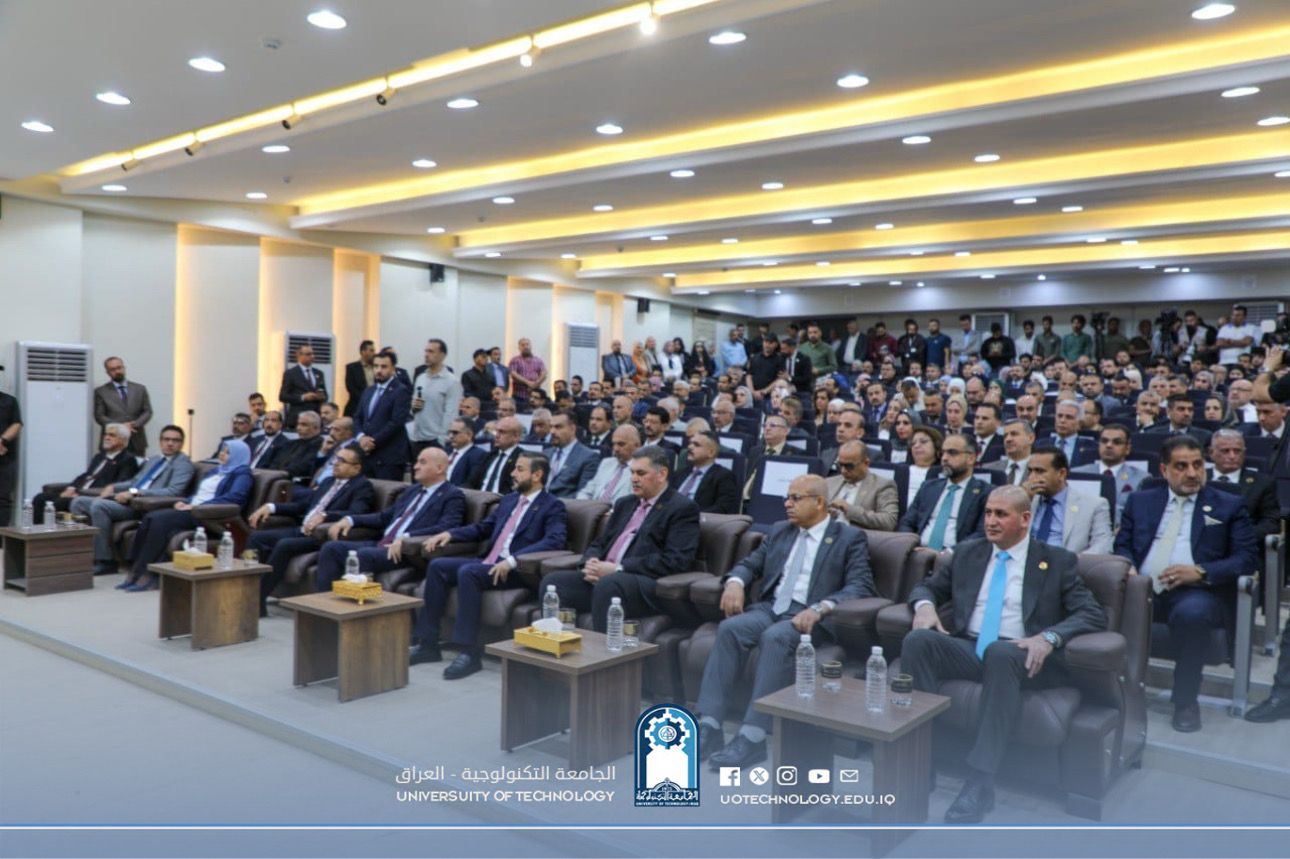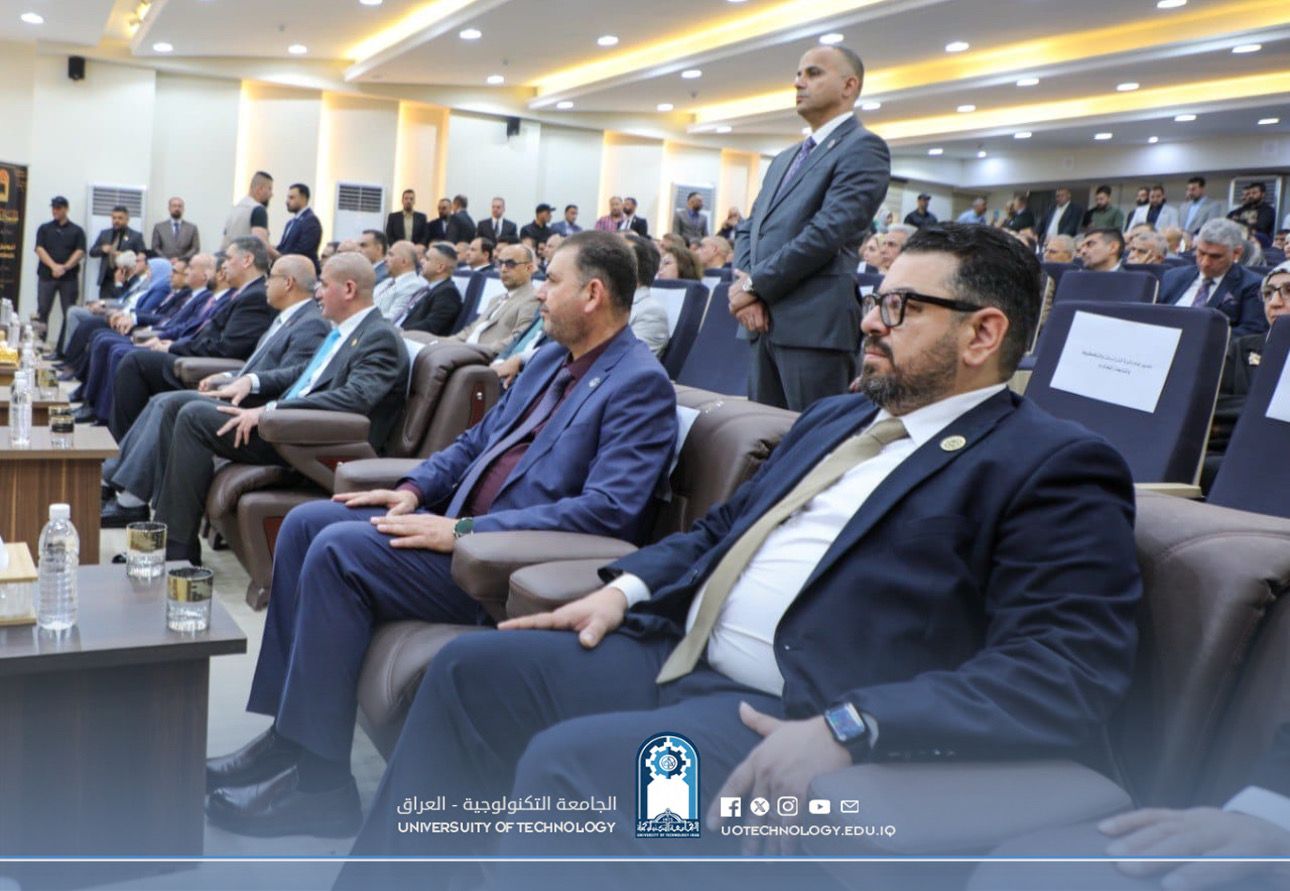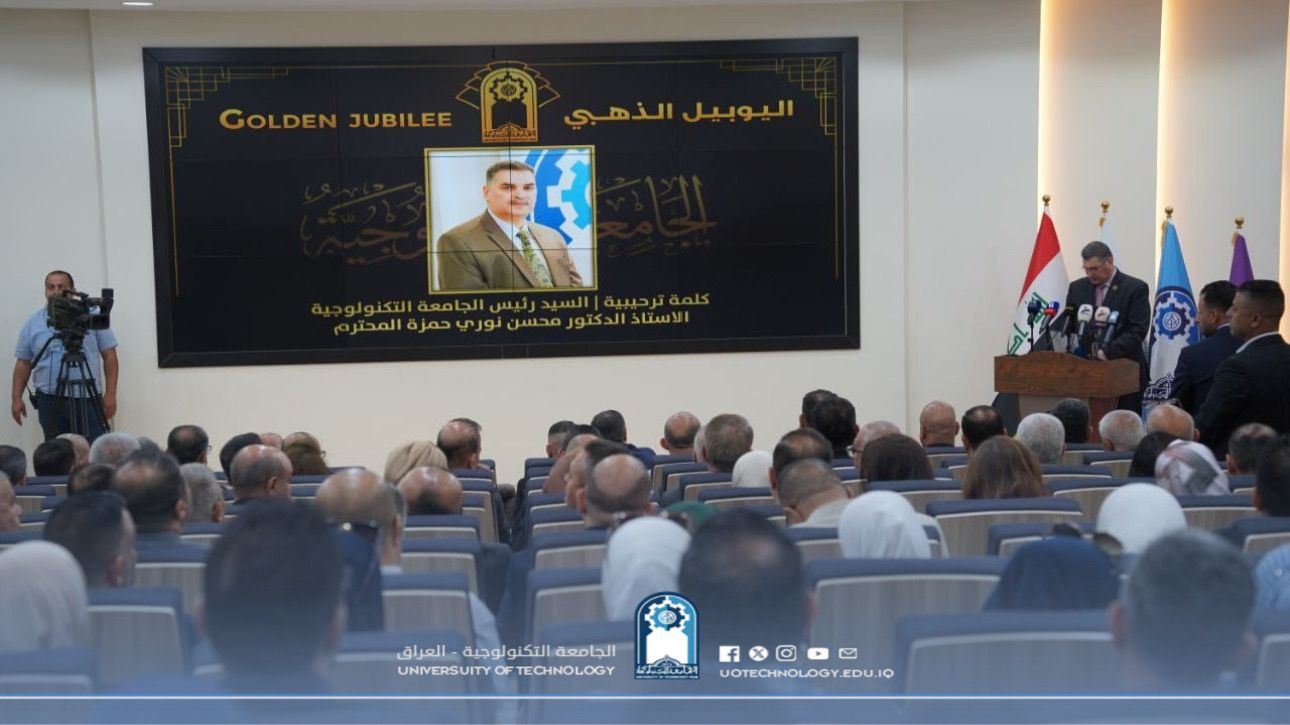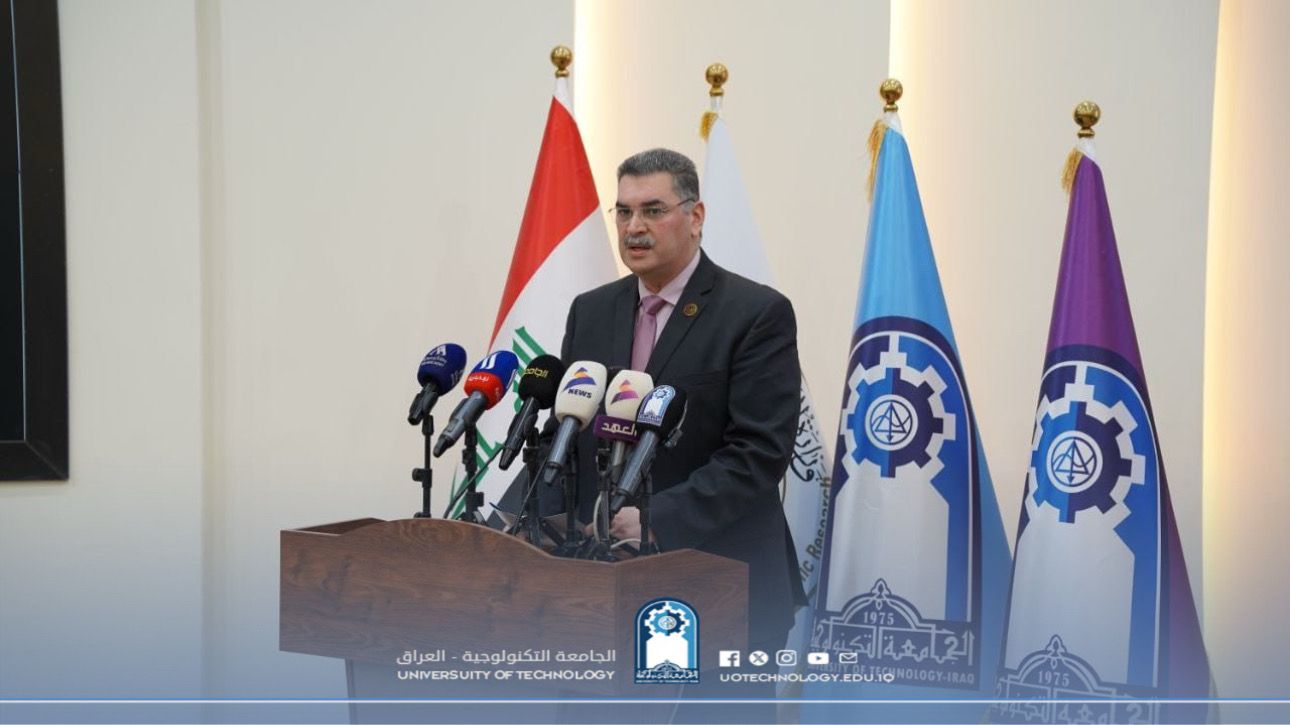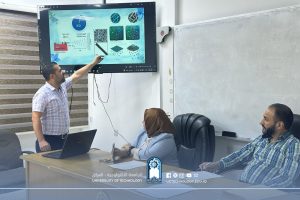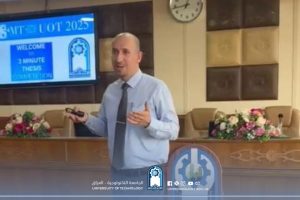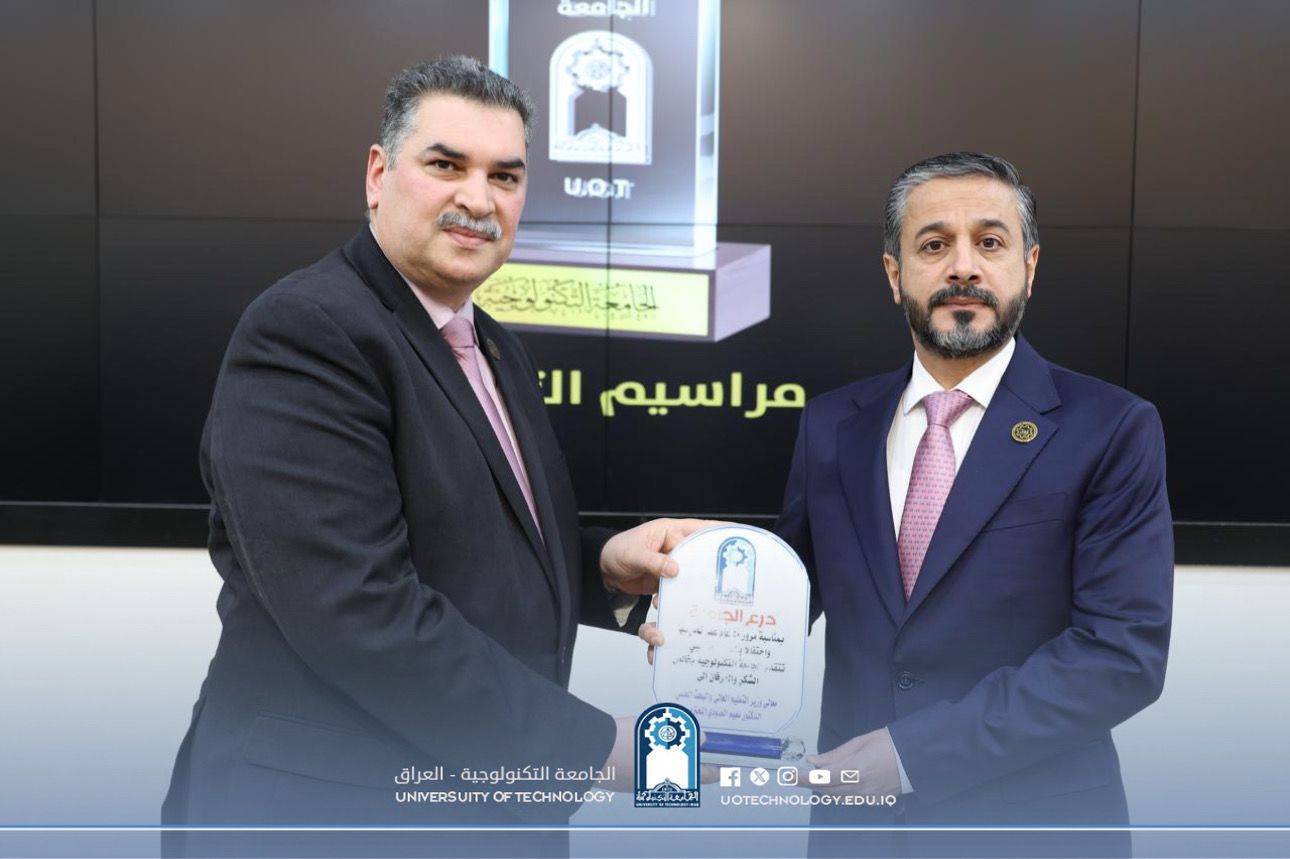
Minister of Higher Education Inaugurates the Central Celebration on the Occasion of the Golden Jubilee of the University of Technology
Under the patronage and in the presence of the Minister of Higher Education and Scientific Research, Dr. Naim Al-Aboudi, the Deputy Minister of Higher Education for Scientific Research Affairs, Professor Dr. Haider Abd Dhad, and the representative of the Presidency of the Republic, Dr. Adnan Ibrahim Muhammad, and under the supervision of the President of the University of Technology, Professor Dr. Nouri Mohsen Hamza, the university celebrated its Golden Jubilee marking fifty years since its establishment.
The celebration was attended by a number of presidents of Iraqi universities and deans of many colleges, in addition to heads of departments at the University of Technology and dozens of professors and students.
In his speech, the Minister of Higher Education and Scientific Research stated that “the celebration of this occasion is of interest to the Ministry of Higher Education and Scientific Research, because we view this event not only from the perspective of time, but also as a positive moment for scientific review and the updating of ideas and visions that enhance the areas of development for our institutions.”
Dr.Al-Aboudi pointed out that the Ministry has provided the appropriate momentum “to support institutions and empower them at the level of the environment of excellence and scientific and administrative procedures. The University of Technology was a priority of this attention, which was embodied in the text of the Ninth Amendment to the Ministry’s Law, which stipulated the adaptation of the university’s conditions by adopting the college system within one academic year, not exceeding the twenty-second of next July.”
Dr. Al-Aboudi also stressed “the activation of applied and professional programs in undergraduate and postgraduate studies and their transition from theoretical spaces to the environment of applied scientific research that achieves the philosophy of these degrees, which are linked to technological specializations that should address the challenges facing society”.
For his part, the President of the University of Technology, Professor Dr. Nouri Mohsen Hamza, in his speech read at the celebration, welcomed the Minister of Higher Education and Scientific Research and all attendees, and said that the honorable journey of the University of Technology was “thanks to God first, and then with the support of our partners and supporters of this scientific institution, foremost among them the Minister of Higher Education and Scientific Research, Dr. Naim Al-Aboudi, who has been and still is a true supporter of science, education, and the university journey at all its stages.” He added that the celebration of the university’s Golden Jubilee “is not only a remembrance of the past, but also a renewal of the commitment to move forward towards a brighter future, in which we carry the banner of science and knowledge with all pride and sincerity.”
The Golden Jubilee celebration of the University of Technology included the screening of a documentary film produced by the Media and Government Communication Department at the university. The film reviewed the history of the university, which began in 1960 and continued to develop until its journey was completed in 1975 when the official establishment of the University of Technology was announced, making it one of the leading universities in the region.
Among the important events included in the celebration was the remarkable lecture given by the Deputy Minister of Higher Education and Scientific Research, Dr. Haider Abd Dhad, who pointed out that he is one of the alumni of the University of Technology. The lecture was titled “Higher Education Strategy in Iraq: A Vision Towards the Future,” and it reviewed the history of generations of university education in the world from the first generation to the fifth. The lecture was full of detailed information about the history of these generations, starting with the first generation that began with the University of Bologna in 1088 AD, passing through the second generation represented by the University of Humboldt, and reaching the third, fourth, and fifth generations, where digital technologies entered, leading to the use of artificial intelligence.
The importance of Dr. Haider Abd Dhad’s lecture was evident in its applied aspect to university education in Iraq, and the indication of the country’s delay in introducing digital technologies by nearly a quarter of a century compared to the world. He added that the Ministry, under the leadership of Dr. Naim Al-Aboudi, has taken upon itself the development of fundamental aspects, foremost of which is the digitization of university education and the introduction of artificial intelligence, not to mention the activation of the Rewards for Scientific Research Law. Dr. Haider also spoke in detail about the leaps achieved by the Ministry of Higher Education and Scientific Research in establishing partnerships with prestigious international universities and developing partnerships between Iraqi journals and major scientific platforms, and presented highly important statistics regarding Iraq’s ranking in scientific research, which has developed significantly over the past twenty years.
The Deputy Minister of Higher Education and Scientific Research concluded by presenting recommendations to ensure the development of university education towards future horizons.
In his comments on the lecture, Minister Naim Al-Aboudi said that Iraqi universities can advance in scientific rankings and that the matter is possible and achievable. He expressed surprise at the despair of some professors and university officials regarding Iraq’s ability to compete with major international universities, and said that Iraq’s civilizational age exceeds seven thousand years and it is capable of leading the way.
The events concluded with the President of the University of Technology presenting a shield of honor to the Minister of Higher Education and Scientific Research, Dr. Naim Al-Aboudi, followed by the distribution of shields to the heads of some departments, former university presidents, and a number of professors in the university’s departments and distinguished researchers.
